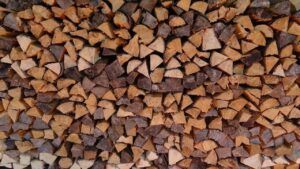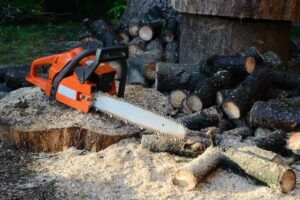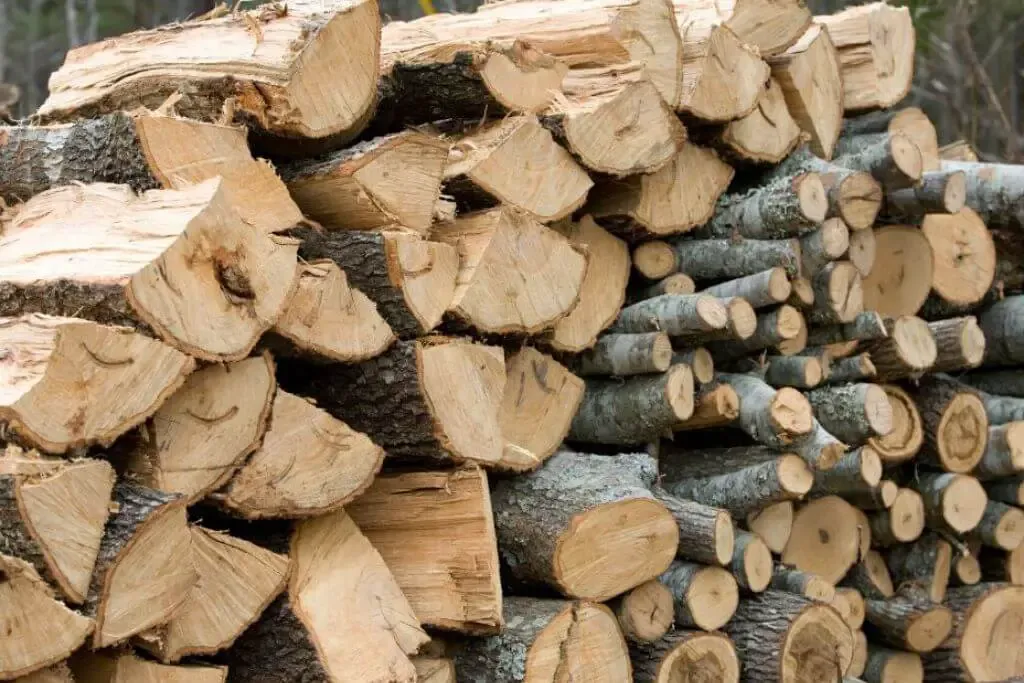
If you’ve ever had to purchase firewood or have been around people who heat their homes with wood, you’ve likely heard the term “cord of wood.”
A cord of wood is a standard unit of measurement used to quantify the amount of firewood.
But how many ricks are in a cord of wood? This seemingly simple question can be challenging to answer due to variations in the size and shape of ricks.
In this article, we’ll comprehensively summarize the answer to this question.
Table of Contents
Understanding the Cord of Wood
To understand how many ricks are in a cord of wood, it’s essential to understand what a cord of wood is.
A cord of wood is defined as a unit of measurement for cut and split firewood, which typically measures 4 feet wide, 4 feet tall, and 8 feet long, totaling 128 cubic feet of wood.
This measurement is standardized in most places, ensuring customers get the right amount of firewood they need.
A cord can be made up of different types of wood, including oak, maple, birch, or pine, among others.
What Is A Rick of Wood?
On the other hand, a rick of wood is a pile of firewood that measures 4 feet tall, 8 feet long, and as wide as the diameter of the split logs, which can vary in size.
This pile is stacked with split firewood, and the width of the pile will depend on the length and diameter of the individual pieces of wood.
How Many Ricks In A Cord of Wood?
As mentioned earlier, there is no definitive answer to how many ricks are in a cord of wood because the size of the rick varies.
However, we can estimate the number of ricks based on general assumptions.
Assuming that each rick of wood has a width of 16 inches, the average diameter of most split firewood, we estimate that there are approximately three ricks in a cord of wood.
This calculation assumes that each rick of wood is 16 inches wide, 4 feet tall, and 8 feet long, equivalent to one-third of a cord.
How To Split Wood Into Ricks
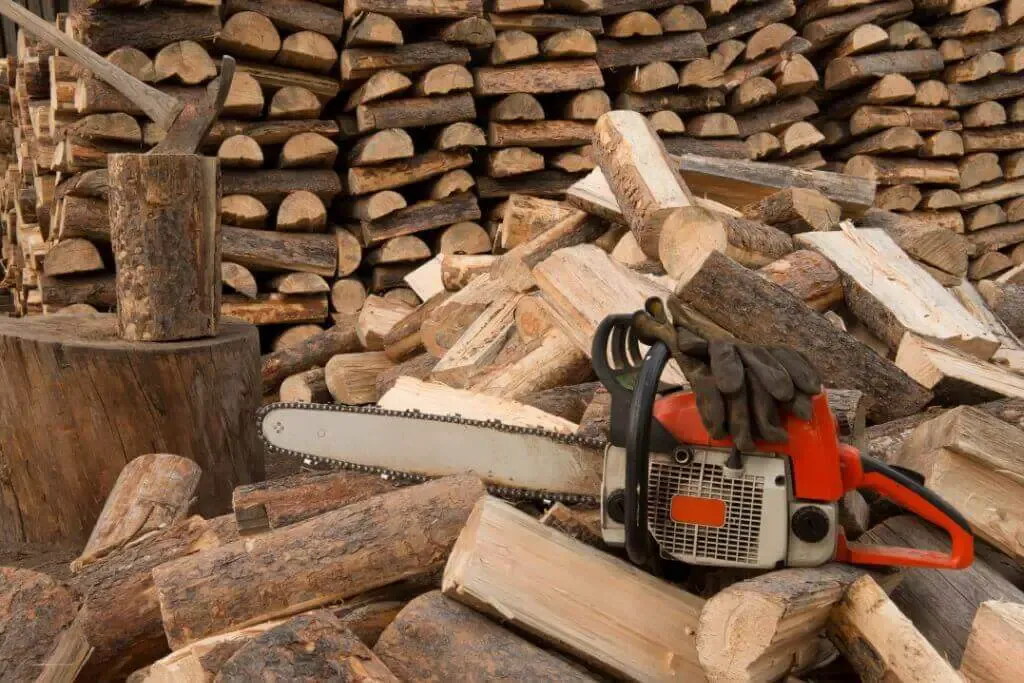
Cutting and stacking wood is a straightforward task but may take a significant period to complete because of the labor needed.
Cutting and chopping wood may be dangerous; it is best to acquire chainsaw chaps, and other protective gear for your safety.
Hire a logger with significant experience to undertake the task if you are not sure how to do it. The following are steps to take when splitting wood into ricks:
1. Measure The Wood
Before cutting the firewood, measure and mark the wood with a marker or a pencil—Mark every 16-inch to 18-inch length on the wood’s surface.
The marks represent where to cut so that you can stack the pieces well. Advanced workers usually split the logs without measuring.
2. Cut The Logs Into Sections
Use the measurements to cut the firewood into manageable pieces.
These pieces will assist with cutting, splitting, and weathering faster because more surface is exposed to the wind and sun.
Crosscut the splits to make them evenly shaped using a chainsaw.
3. Split Into Logs
Split the 16-inch to 18-inch sections into logs. You require several logs to achieve the required amount of wood.
This step may take some time to be completed. You need to attain 128 square feet of wood, enough to fill a truck’s bed multiple times.
4. Prepare The Area For Stacking
Clear the ground before stacking your split wood. Ensure that wood does not lie directly on the ground to avoid destruction from pests and dirt from embedding on the wood. Dirt may lead to uneven burning.
5. Stack the Firewood Into Cords
After you have prepared the ground, do the stacking. Pile the woods into presentable and neat rows.
When winter arrives, you will not be worried about uneven burning, stuck dirt, or rocks. The most vital thing to remember is to stack the wood properly to avoid spending cash on firewood during the cold seasons.
6. Cover The Stacks
Covering the firewood arranged in ricks and cords with a tarp is best. A tarp made of plastic is an excellent choice because it assists with removing water from the stack.
Also, leave some space around the pile to allow the free movement of air. A completely covered stack might have the wood develop mildew and mold due to a lack of air.
Your firewood will be ready to use when winter arrives. Dry firewood is essential to keep your house warm during the cold seasons.
Signs Of A Well-Seasoned Firewood
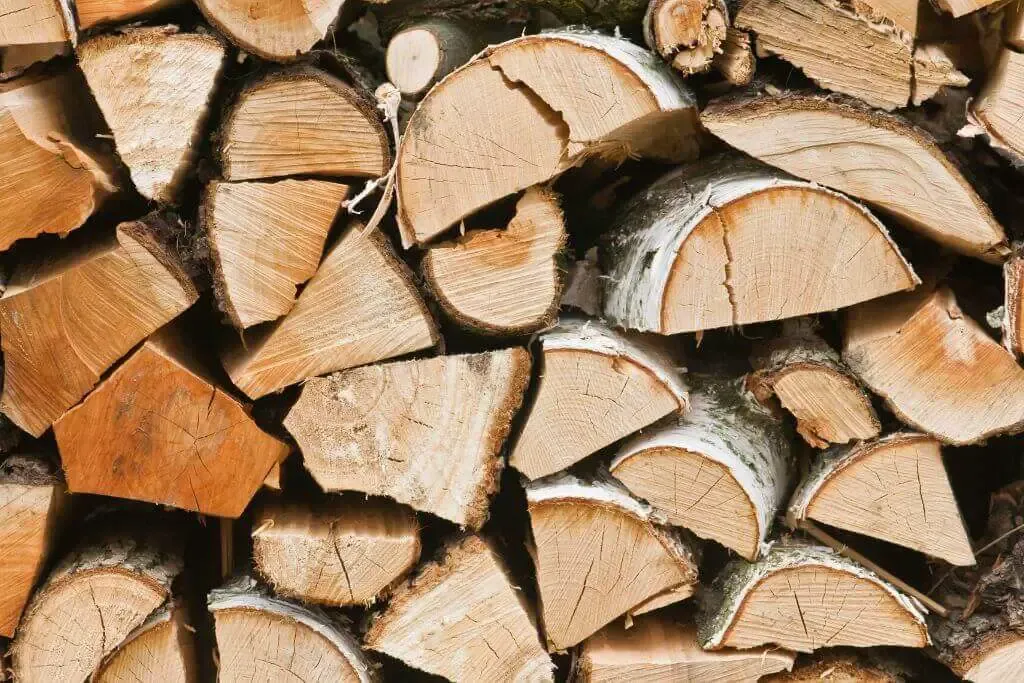
It is best to know how the wood should look, whether you want to buy dry or wet wood.
Burning good wood in the house establishes a peaceful and soothing ambiance.
Removing sap and water from the logs makes them easier to break and burn. There are several indicators that a piece of wood is ready to burn.
Here are the significant signs of firewood that are adequately weathered.
1. The Wood Is Light
Water adds significant weight to a log. Therefore, if the wood is dry, it should be lighter than usual.
About 25 percent of a freshly cut tree is water. The log loses a significant amount of weight when the water vaporizes.
2. The Bark Is Falling Off
The log is still wet if it has a thick layer of bark attached to it. A tree’s bark should be easily removable when the log has dried. Sap and water are what keep the log attached to its bark.
3. Cracked Ends
It would be best if you got firewood that has cracked ends. The cracks show that the tree has lost all the water and sap, making it the perfect choice to burn.
4. Sounds Hollow
A dry log should have a hollow sound when you hammer on it—Bang multiple kinds of wood against each other to know whether they create a hollow sound.
5. Gray Color
Dry logs usually lose the yellowish color of tree sap and meat. A gray log is ready for burning. Most trees usually establish this color when drying; only a few may become whitish when they lose water and sap.
6. There Is No Odor of Wood
When wood is completely dry, it loses its smell. The sap produces the wood scent, so if the sap is fully dried out, there will be no wood smell.
Smell several pieces of wood to ensure they do not produce any scent before burning them.
FAQs
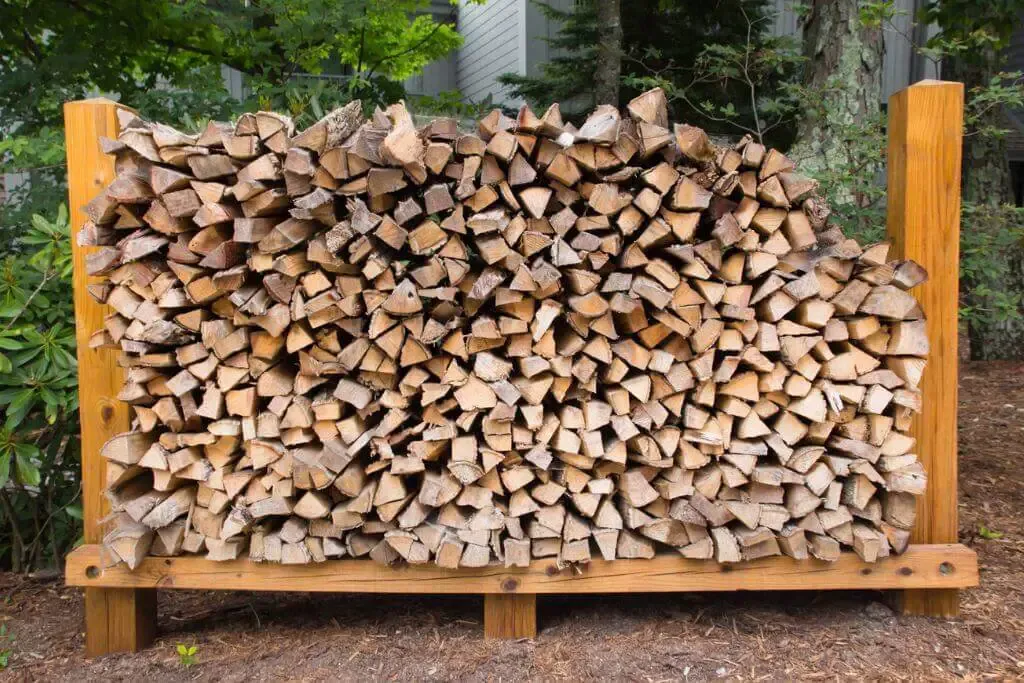
Where Did The “Ricks” Originate From?
“Ricks” used in firewood originated from the hayricks that established a haystack. A “rick” is a stack or mount of items with agricultural significance.
Can I Buy Firewood By The Rick Instead Of The Cord?
A cord is sometimes too large for homeowners, so many firewood suppliers do offer firewood by the rick.
However, you need to remember that buying firewood this way will be much more costly. If you use firewood regularly, getting it by the cord is always worth it.
How Big Is A Rick Of Wood?
In the US, a rick of wood measures 4 feet by 8 feet and average weighs about 250 pounds. A typical rick is a third of a cord.
Why Should You Keep Firewood In Ricks?
Keeping firewood in ricks ensures that all firewood can enjoy proper air circulation.
As a result, the risk of mold and mildew growth is minimized. You also have an easier time accessing the wood, saving both time and effort.
Is buying a cord of wood or a rick better?
It is typically more cost-effective to purchase a cord of wood than individual ricks.
Buying a cord of wood ensures you get the right quantity and quality of firewood for the season.
Additionally, purchasing a cord of wood ensures that you get a standardized measurement, which makes it easier to compare prices.
Conclusion
The answer to how many ricks are in a cord of wood can vary based on the size of the rick.
However, assuming that each rick of wood is 16 inches wide, we estimate that there are approximately three ricks in a cord of wood.
It’s important to understand the difference between a cord of wood and a rick and the factors that can impact the amount of firewood you need.
By better understanding firewood measurement and storage, you can ensure that you have the right quantity and quality of firewood to meet your needs.


